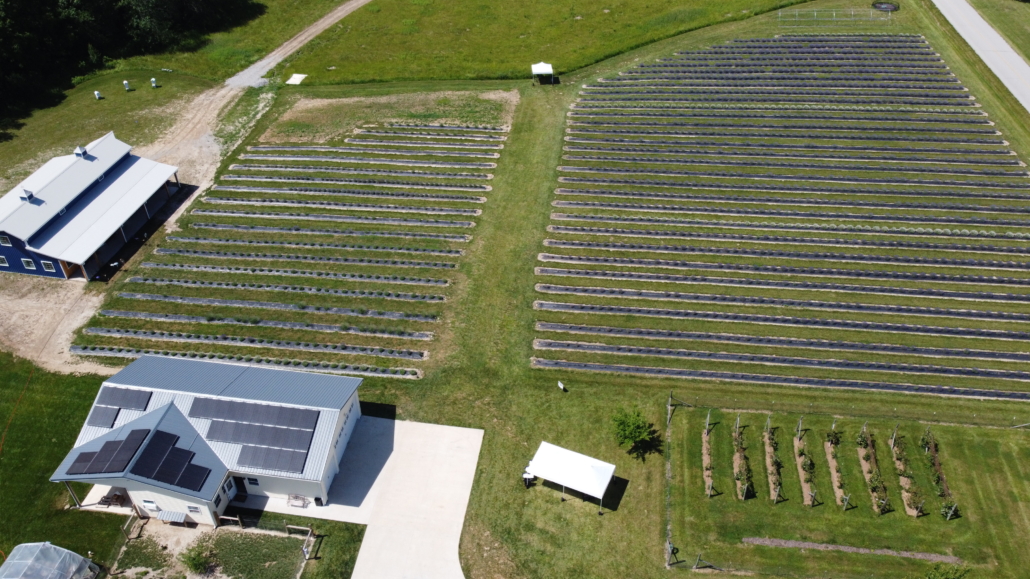Battlefield Lavender Farm: Solar Powered Processing
By Chris Lent, NCAT Agriculture Specialist
The concept of agrisolar—the use of land for solar electric and agricultural production—is becoming a popular idea. It captivates the imagination to think of the many ways we can use a limited land base to produce crops and livestock while also producing clean power on that same land. But sometimes co-locating farming with solar energy production can be as simple as a traditional roof-mounted agrivoltaic system that produces all the energy needed to run a small farm operation.
Near Centralia, Missouri, Jason and Katie Lockwood own Battlefield Lavender Farm, where they cultivate the largest plot of lavender in the state. They grow 2,400 plants of 16 culinary varieties of lavender that are processed into artisanal soaps, décor, candles, aromatherapy, lavender ice cream, and much more—and the entire farming business is powered by solar. Jason and Katie strive to be as self-sufficient in their lives as possible, and after looking at the numbers, they decided that installing a solar array to provide all the power for their farm not only made economic sense but also aligned with their values and the values of their customers. They offer frequent tours of the lavender farm to their community that always start at the solar panels.
In 2018, the 14.1-kilowatt solar array was installed on the south face of the workshop roof, a building that they call the “yellow barn.” To accommodate all the panels needed for this size system, some panels were installed facing east and west on a gable extension off the south-facing roof of the building. The system consists of 44 300-watt photovoltaic panels, which cover approximately 800 square feet of roof space, and two grid-tied inverters.
The Lockwood’s purchased and own the solar system themselves and have a grid interconnection agreement for the system with Consolidated Electric, a local electric cooperative. The state of Missouri requires electricity suppliers to provide net metering for customers that own their own renewable energy systems. This means the electric company will provide a credit on the electric bill to Battlefield Lavender for any electricity produced by the solar panels that isn’t consumed by the farm. The credits are used when usage exceeds electric production on the farm. After taking advantage of a 30% federal renewable energy tax credit incentive, the system cost $28,000 out of pocket with an estimated simple payback of 10 years at current electricity rates.

The roof-mounted solar installation in front of rows of lavender plants. Photo: Battlefield Lavender Farm
Electric production from the solar system very closely matches farm usage to operate a lavender drying barn, a greenhouse, and farm store, saving the farm about $225 a month in electric bills. After the payback period ends in five years, the system will be saving the farm $2,700 a year, or more if electricity rates increase. Additionally, the farm didn’t see a property tax increase when the system was installed because Missouri offers a property tax incentive whereby property owners who install an alternative energy system are not assessed at a higher rate.
The only small challenges that were encountered with the installation of the solar system at Battlefield Lavender were in coordinating the interconnect agreement and the necessary steps for installation. But owner Jason Lockwood said these were minor issues that are part of any installation project.
Jason and Katie are happy with their decision to install solar panels to provide power to their farm, and they highly recommend it to other farms. In fact, they have been so satisfied with how solar power has worked for their energy needs on the farm that they are now considering more solar to cover their domestic energy needs. Jason’s only advice to those considering solar would be to look at the numbers first and make sure it will make sense financially. Usually, it does. And secondly, find and work with a good solar installer who can answer your questions and work to deliver what you want.


